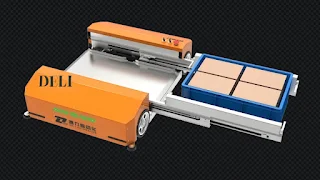How many types of shuttle Robot are used in smart warehouses?
In smart warehouses, shuttle robots (also known as Automated Storage and Retrieval System, or ASRS) play a crucial role in improving storage efficiency and operational speed.
There are several types of shuttle robots used, each designed for specific tasks or types of goods.
Here is an overview of the main types commonly used in industrial applications:
1. Mini Load Shuttle
Function: Primarily used for small, lightweight items such as boxes, trays, or totes.
Application: These are often used in high-density storage areas where space is limited, such as retail warehouses, e-commerce, and pharmaceutical distribution centers.
Features: Compact, fast, and can handle smaller goods. They often work in combination with racking systems that maximize vertical space.
2. Pallet Shuttle
Function: Designed to move larger, heavier loads (pallets) within a racking system.
Application: Used in environments that store bulkier goods, such as food & beverage, manufacturing, or heavy-duty warehouse operations.
Features: These shuttles can travel along rails within the racking system and are typically used for deep lane storage, allowing for efficient use of warehouse space.
3. Rack-Integrated Shuttle (or ASRS Shuttle)
Function: Operates within the racks, typically in high-density systems, to store or retrieve goods.
Application: Warehouses needing very dense storage of both small and medium-sized goods, such as automotive parts or e-commerce.
Features: It can be integrated into the racking system itself, allowing for optimal space usage, and is often combined with other automated solutions like conveyors.
4. Two-Way Shuttle
Function: Can move in both directions (forward and backward) along the aisles of the racking system.
Application: More common in environments that require flexibility and fast retrieval, such as order fulfillment centers or warehouses with high SKU diversity.
Features: Highly versatile, can move horizontally and vertically, providing quick access to stored goods. It’s often used in "flow-through" systems where inventory is constantly moving in and out.
5. Vertical Shuttle (or Vertical Lift Shuttle)
Function: Moves vertically between different storage levels in a racking system.
Application: Ideal for warehouses with multiple vertical storage tiers, such as in high-rise or multi-level facilities.
Features: Optimizes vertical space, improving storage density. It's more specialized and can handle a variety of products depending on system design.
6. Autonomous Mobile Robots (AMRs) with Shuttle Capabilities
Function: These are robots that can autonomously navigate the warehouse and have shuttle-like capabilities, such as retrieving or delivering items to specific locations.
Application: Used in more complex or flexible warehouse operations, such as those requiring decentralized and dynamic movement.
Features: Equipped with AI, sensors, and vision systems, AMRs are flexible in handling different types of goods and can work alongside humans in more open environments.
7. Heavy-Duty Shuttle
Function: Designed for carrying much heavier loads than typical mini-load or pallet shuttles.
Application: These are used in industries like manufacturing and automotive, where large or heavy products need to be stored and retrieved efficiently.
Features: Stronger motors and load-bearing capacities allow these shuttles to carry very heavy goods.
Factors Influencing Shuttle Type Selection:
Load Type and Weight: Lighter products may use mini load shuttles, while bulkier items may require pallet or heavy-duty shuttles.
Storage Density: High-density storage needs often use mini-load and two-way shuttles, whereas lower-density warehouses may rely on AMRs or heavier-duty shuttles.
Throughput Requirements: If a warehouse requires fast retrieval, two-way or rack-integrated shuttles are often preferred.
Each shuttle robot type is optimized for certain operational needs, so the choice will depend on the specific requirements of a warehouse, such as product types, throughput speed, and space utilization.
Deli Group, as an experienced integrator in the ASRS , with its own R&D experience and the support of a national-level technical team, we design and produce high quality ASRS equipments.





Comments
Post a Comment